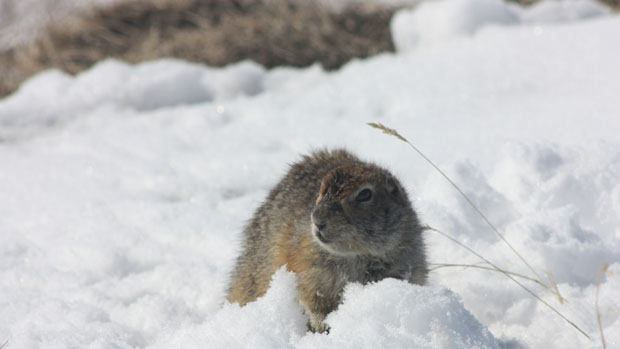Hibernation - The prospects offered
- SABEST VIT 2021

- Apr 15, 2021
- 3 min read
- Esha Pradhan
Hibernation is a state of greatly reduced metabolic activity and lowered body temperature adopted by certain animals. It is an adaptation that helps them conserve energy to survive adverse weather conditions and/or lack of food.
Examples of hibernators include some mammals (such as rodents, bats, hedgehogs, and bears), amphibians, reptiles and fishes. Only one bird species – the common poorwill – is known to hibernate.
Although not much has been discovered about the exact mechanisms involved in hibernation, research into these processes could result in vast benefits for humans.
Arctic ground squirrels could provide clues to understanding Alzheimer’s disease.
These squirrels’ body temperatures drop to below the freezing point of water, and they wake periodically to shiver themselves back to more reasonable temperatures. During hibernation, their brains undergo incredible stress – neurons shrink and connections between them shrivel. However, they also demonstrate incredible plasticity. During intervals of arousal (the periodic waking up), the squirrels’ neurons recover—blooming to even greater levels than usual, then settling back to normal. It has been observed that a protein called ‘tau’ builds up in the brain cells of hibernating squirrels—and in the brains of people with Alzheimer’s disease. Somehow, the squirrels are able to scour tau from their brains when they wake up. The answer to how they do this could provide insights into Alzheimer’s and other neurodegenerative diseases.

Image credit - https://www.science.org.au/curious/hibernation
An in-depth understanding of hibernation could enable humans to go into a similar state of stasis, and bring new horizons to space travel. Perhaps we might be able (as some recent NASA-backed work suggested) to ‘sleep our way to Mars’, or travel to far-off galaxies without needing large supplies of food or oxygen.
Such a breakthrough would also be immensely useful in the medical field – it would save the lives of seriously ill or injured people by temporarily putting them in a state of hibernation until treatment can be given.
The discovery that some lemurs hibernate offers tantalizing possibilities for human hibernation because, as primates, they are genetically very similar to us. Some researchers point out, however, that we can’t extrapolate data from smaller animals, who can hibernate naturally, to humans, who can’t.
Most hibernating animals put on a lot of weight in the build-up to hibernation. They also become insulin resistant. These two aspects mean that the animals are able to access a timely reserve of fat during the winter months, and are observed in obese humans as well.
However, unlike humans with obesity, hibernators can later easily shed the extra weight, their bodies automatically reverse insulin resistance, and they do not develop hypertension or low-grade inflammation.
It is believed that some genetic mechanisms involved in regulating hibernation may also play a role in obesity control. Hibernating animals may have evolved mechanisms that allow them to “switch off” the activity of certain genes associated with obesity.
Understanding the ability of hibernators’ cells to survive very cold temperatures and the natural antifreezes produced by some animals could enable us better preserve and transport human tissues (for instance, for transplantation).
Hibernating animals don’t experience muscle atrophy even after long periods of not moving. Replicating this in humans would help us prevent muscle deterioration due to hospital bedrest or to treat muscle disorders.
The lack of bone deterioration in hibernating animals, even after long sedentary periods, is a phenomenon whose understanding could lead to new ways of treating degenerative bone problems or diseases.



Comments